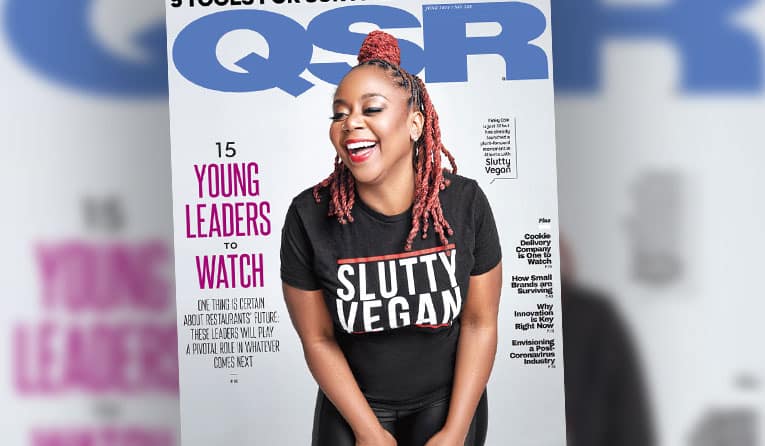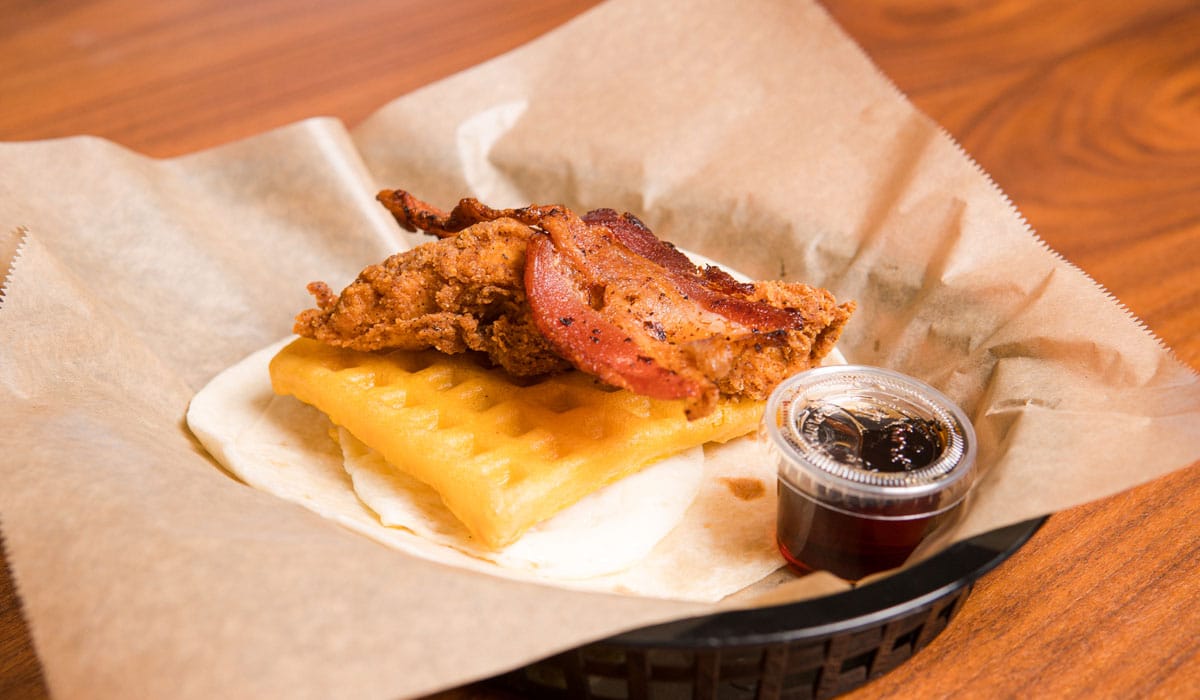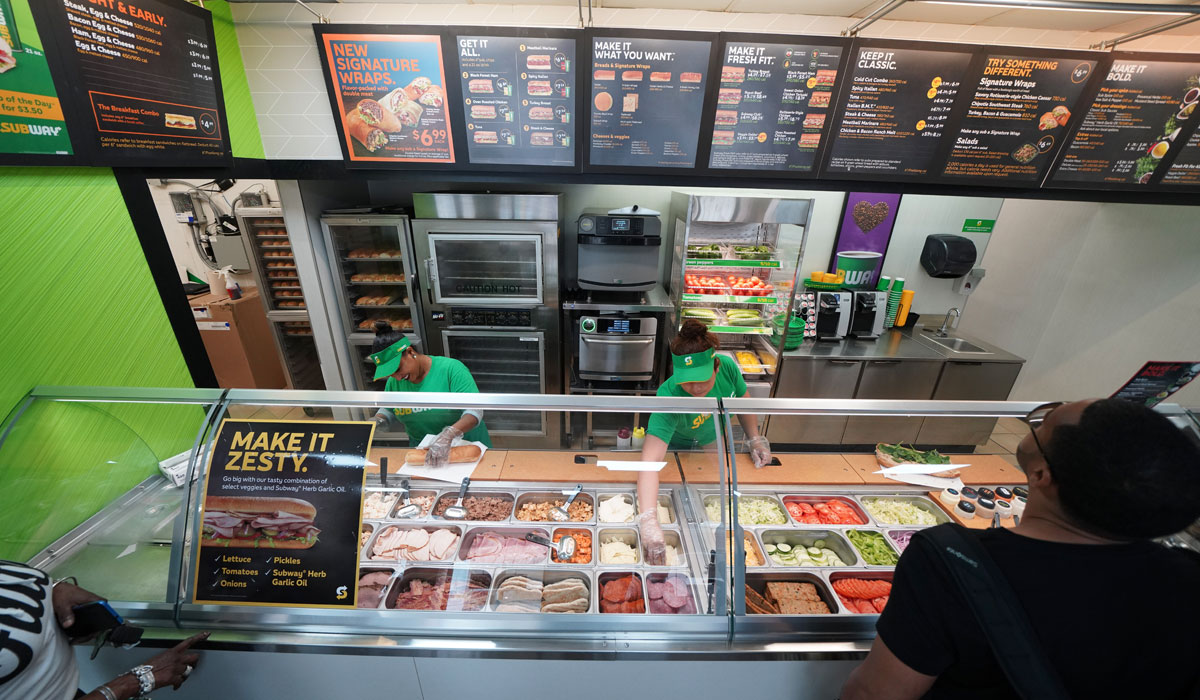Updating Subway isn’t as easy as flipping a switch, says Trevor Haynes, president of North America.
The brand is the world’s largest quick-service chain in terms of units, with nearly 40,000 restaurants and a network of more than 20,000 franchisees. Any change requires a huge amount of teamwork, collaboration, and coordination. But change is exactly what franchisees and customers have repeatedly asked for, Haynes says. Both parties feel the product was good—there just needed to be evolution.
Subway responded to those requests with the largest menu update in its 56-year-history, announced Tuesday morning. More than 20 upgrades—11 new and improved ingredients, six new or returning sandwiches, and four revamped signature sandwiches—are scheduled to roll out on July 13 in all U.S. Subway stores. The chain is dubbing the move, the “Eat Fresh Refresh.”
“If you look at the U.S. last year with COVID, it was a testing, trying time,” Haynes says. “So on the back end of this, the country’s opened up, the world is opened up to an extent, but people are open to new things and getting back to business. So we think this is a perfect time to tie in with summer 2021 and coming up with this platform.”
Paul Fabre, senior vice president of culinary and innovation, first points to the bread. Subway worked 18–24 months with what it called a “world-class” panel of bakers, including Nancy Silverton, who won the James Beard Foundation’s Outstanding Chef Award in 2014. Out of that came new breads, like Artisan Italian and Hearty Multigrain.
Elevated core proteins include a more thinly sliced turkey, which was already Subways No. 1 selling sandwich. The chain also took the thinly sliced approach with ham. Steak—a part of the company’s top-selling hot sub—is thicker and juicer, with larger pieces. Meanwhile, other proteins are making their long-awaited return. For example, roast beef and rotisserie chicken were removed from menus during the height of COVID to simplify operations, but franchisees have asked for the items to return. Other notable ingredients include smashed avocado (avocado and sea salt), BelGioioso Fresh Mozzarella, and MVP Parmesan Vinaigrette.
The combination of new proteins and ingredients led to the creation of new sandwiches, like the All-American Sub, which comprises the new thinly sliced ham and turkey and smoked bacon, without artificial flavors or colors. There’s also the Turkey Cali Fresh, a product that includes the new Hearty Multigrain bread, along with turkey, mozzarella, avocado, bacon, and spinach.
As part of the big news, Subway also responded to a recent controversy by emphasizing it sources 100 percent wild-caught tuna from “from leading global food suppliers that have a reputation for working diligently with food safety and quality experts to ensure consistent, high-quality products at every stage of the supply chain.”
Fabre explains Subway was always about better-for-you options, however, the company noticed a growing number of choices in the marketplace. So the brand decided to set itself apart by adding craveability, and marrying that with its healthier lineup.
“A lot of that starts with, ‘hey, where can we make the biggest impact,’” Fabre says. “Truly what it is, it’s not just one LTO or one new sauce—it’s what has impact. It’s the breads, of course, because of all the sandwiches, and then the key protein. So how do we make the stuff that people come in for every day and how do we make that better? And that’s how it started. It’s the insight and then some data and then working with suppliers and chefs and really making those products better and validated.”



Haynes says the Eat Fresh Refresh was a “mammoth effort” from all engaged stakeholders—corporate, supply chain, vendors, and franchisees. Subway tested products in different markets—Rhode Island, South Carolina, Oregon, Arizona, and Illinois, to name a few—for several months, and received an enormous amount of feedback from select franchisees, or brand ambassadors.
Subway worked with its supply chain to stand up core vendors to produce key items like turkey, ham, and steak, but also brought new partners to the table to ensure the supply chain is big enough to support the significant updates. Haynes notes 92 percent of the U.S. population is within 5 miles of a Subway, so the company knows what type of impact this rollout is capable of.
“I think the beautiful piece has been, everyone sees it, they want it and there’s a huge belief in the system that this is absolutely the right thing,” Haynes says. “And the journey that we’re on to create a better Subway, a bolder Subway is absolutely the right thing.”
To make it easier for customers to purchase these new items, Subway has upgraded its app, showcasing a new dashboard, less clicks during the ordering process, and insight into out-of-stock items. Additionally, the chain is partnering with DoorDash to launch delivery through its app and website in select markets.
READ MORE: Subway Steps Up to the Curb
Digital sales accelerated at Subway during the pandemic, just as it did across the industry. Forward-thinking franchisees crafted curbside pickup programs, and the company was able to take that and bring it to life on its digital platform. Haynes acknowledges the rollout of curbside wouldn’t have occurred as quickly as it did if it weren’t for motivation from COVID.
“I think it’s just making our brand much more accessible and convenient,” Haynes says. “That’s what we’ve got to go after. Subway has to be accessible, has to be convenient. We need to have all channels open for the guests so they can get to us anytime that they want.”
Although there is a portion of consumers who want to have items delivered, that doesn’t mean they’re not visiting the restaurant, as well. That’s why Subway is continuing with its reimage and remodel process, with 7,000 to be remodeled by the end of 2021. The redesign includes LED lighting, and new floor coverings, containers, tables, colors, and chairs. That will be accompanied by new in-store merchandising and packaging that “brings our iconic brand and unique voice to life,” the company said.
 [image source_ID=”130162″]
[image source_ID=”130162″]
“Subway’s always improving and just making the experience better and better for the guests. But still some of the tried and true classics and favorites are there,” says Trevor Haynes, Subway’s president of North America.
Getting back to the lean toward digital, Haynes says it opens up possibilities in terms of where Subway could place a location. For many years, the chain delved into nontraditional spots, as seen by its partnership with some gas stations and Walmart. In the future, Subway will explore similar partnerships and investigate how to make its existing ones even more successful.
The company recognizes that people are on the move, and that it needs to be in more places to meet them.
“If we had a purpose-built container that you could drop down in a parking lot, that could be a Subway. As long as you get electricity to it or whatnot, away it can go,” Haynes says. “I mean our footprint can fit into so many different shapes and sizes. So we see that as a huge piece of growing up the brand over time. But we’ve always had an idea about unit count, but moving forward, it’s as much about what is the market share that we’re getting from a trade areas.”
Haynes and Fabre agree franchisees are just as excited about the nationwide rollout of the menu and digital improvements. David Liseno, a multi-unit Subway restaurant owner in Central New York, says the franchise group is “unabashedly excited.” He adds the communications campaign behind Eat Fresh Refresh is going to be “epic” and that franchisees have been involved from the outset.
John Dell, who owns roughly 130 Subway locations in Kentucky, Tennessee, and Florida, and serves on the Subway National Franchisee Advisory Board, challenges the phrase that Subway “handed down” the significant updates to operators.
“I think that we’ve had so much skin in the game,” Dell says. “While these products have been talked about over the years, this group has brought them together in a cohesive strategic platform that we’ve been a part of, so I think we own it as much as they do. They own it as much as we do.”
For months, franchisees worked with employees to learn new bread baking and how to handle new proteins, with a focus on speed of service. Dell has worked with Subway for 15 years and he believes staff has never been more highly trained.
Liseno notes if an operator builds the type of culture where employees enjoy serving products, workers will embrace changes that are positive, and not just “change for changes sake.”
“We’re improving every part of the menu, making sure that the variety that we give to our customers is even more fleshed out,” Liseno says.
As part of the Eat Fresh Refresh, more than 10,000 Subway restaurants across the country will close at 6 p.m. local time on July 12 to prepare for the next-day launch. When stores reopen, Subway will give away up to one million free subs from 10 a.m. to noon. Guests can visit any participating location and get a free 6-inch Turkey Cali Fresh sub upon request.
Although the upcoming enhancements are historic and widespread, Haynes says it’s just the beginning of Subway’s new journey. There will be further iterations over time.
“Subway’s always improving and just making the experience better and better for the guests. But still some of the tried and true classics and favorites are there,” Haynes says.




